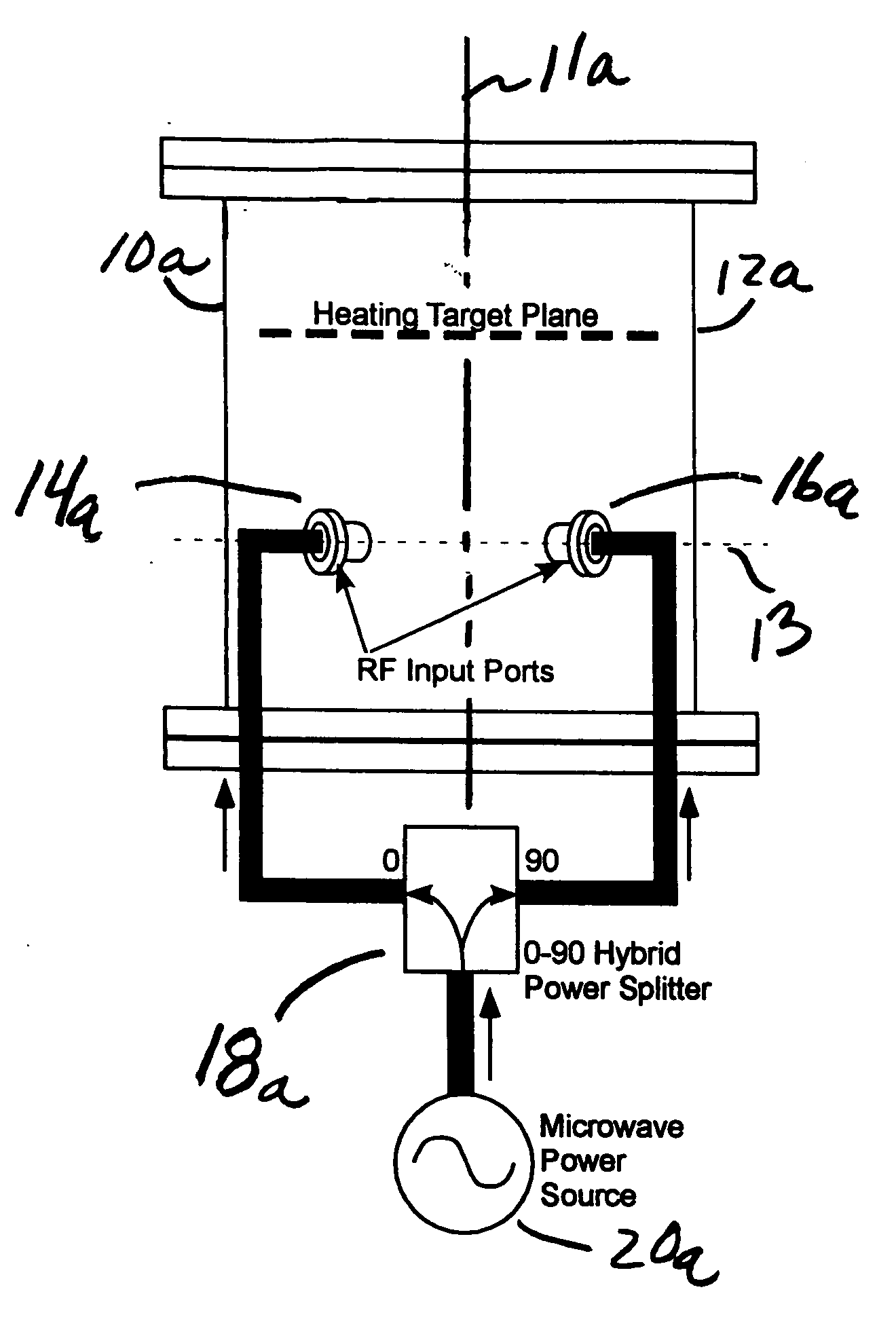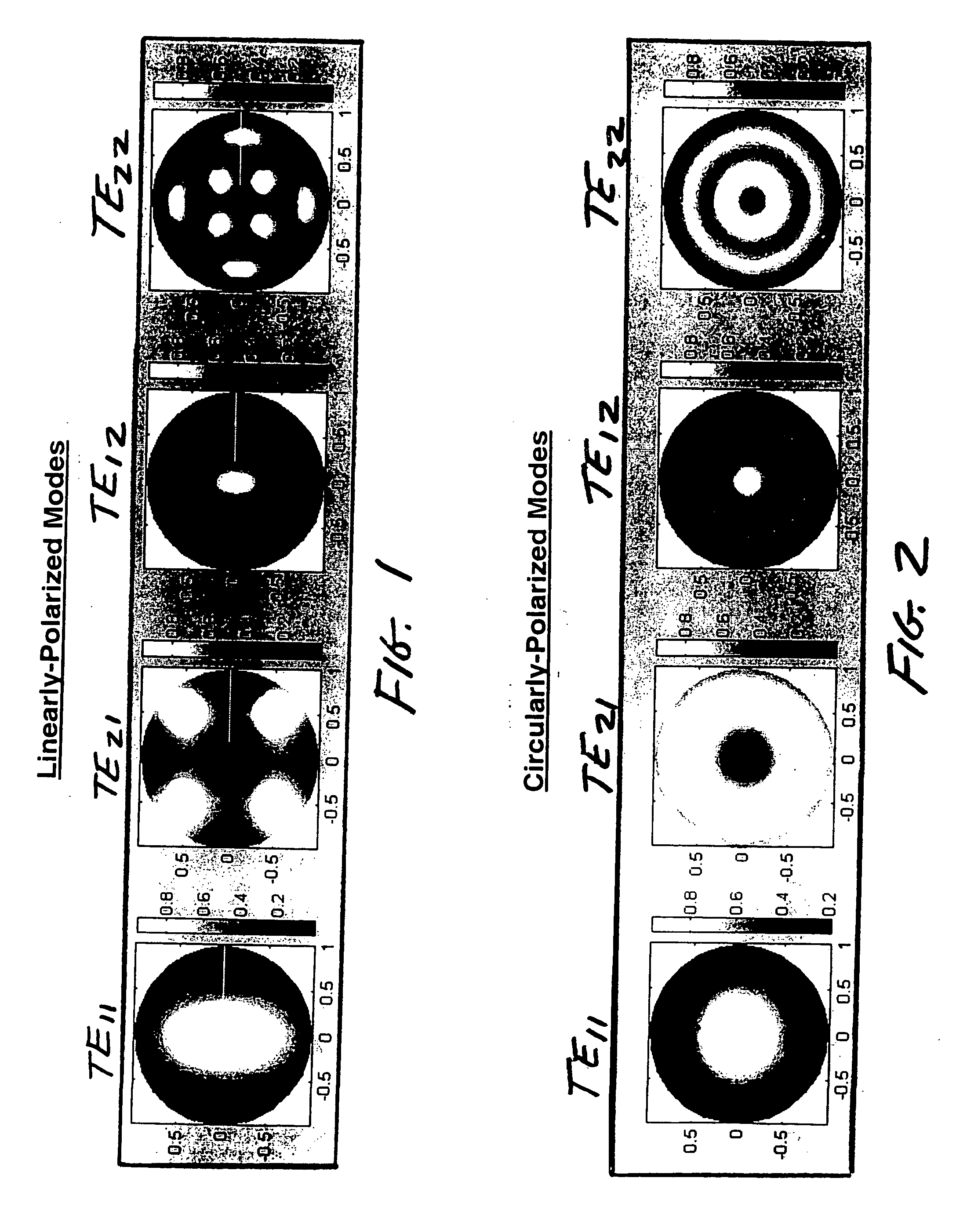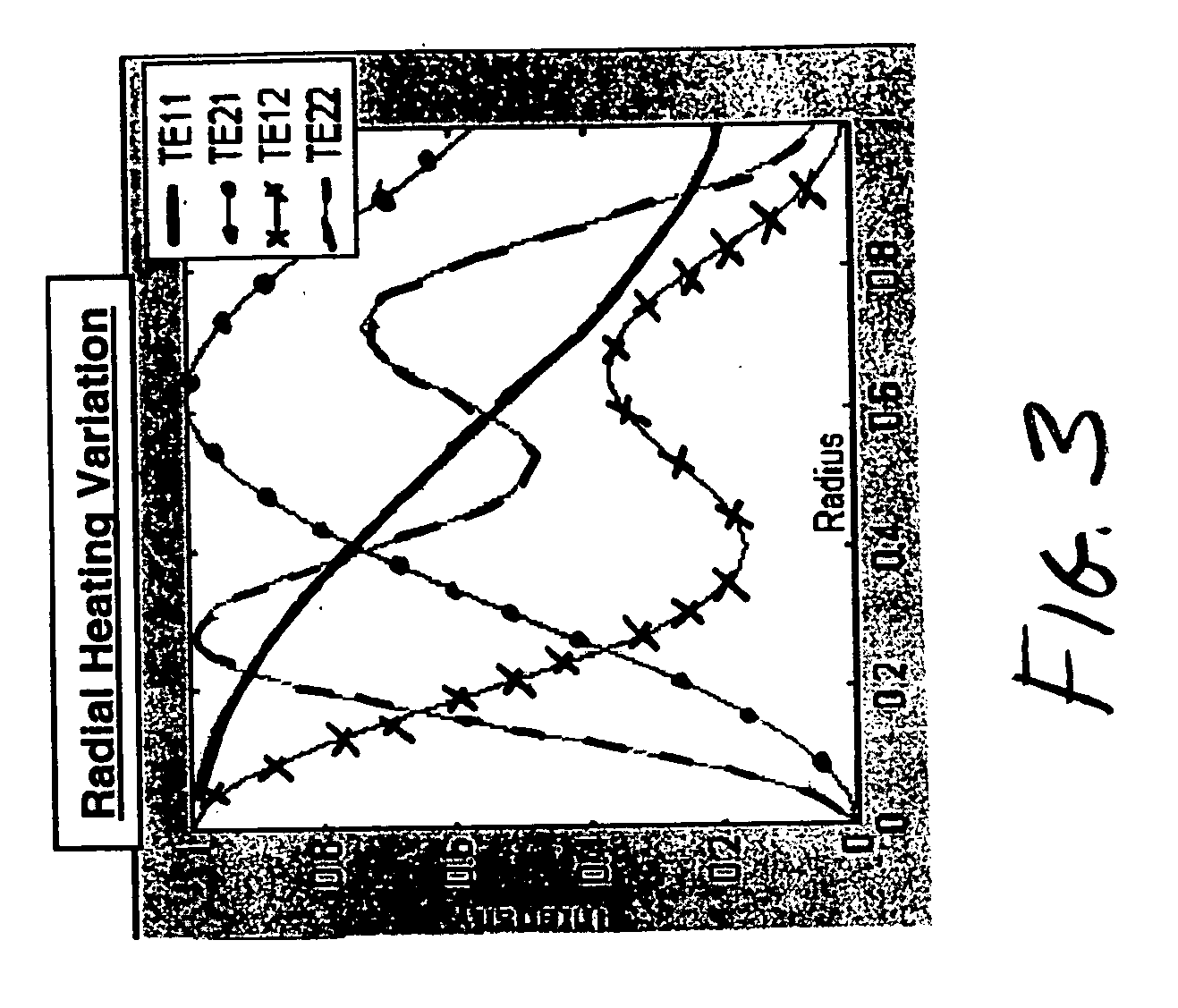Uniform microwave heating method and apparatus
a microwave heating and uniform technology, applied in microwave heating, electrical/magnetic/electromagnetic heating, electrical apparatus, etc., can solve the problems of non-uniform heating, many applications do not allow the inclusion of such materials, and limit the space available in the cavity for the target material, so as to promote uniform heating
- Summary
- Abstract
- Description
- Claims
- Application Information
AI Technical Summary
Benefits of technology
Problems solved by technology
Method used
Image
Examples
Embodiment Construction
[0030] When using microwaves to heat various materials for various purposes, one usually has to live with an inherent non-uniformity in the heating of the target material, due to electromagnetic modes that constrain the heating energy to specific patterns within the heating cavity. Considering that the cavity typically consists of a cylindrical geometry of arbitrary cross section, the most common being rectangular or circular. Microwave radiation is introduced into the cavity at a coupler port designed for that purpose. The electromagnetic radiation within the cavity is distributed among several orthonormal cavity modes. Each mode is a solution to the Maxwell's wave equation given the cavity's particular boundary conditions.
[0031]FIG. 1 illustrates the heating pattern intensity as a function of radius that would be experienced by targets placed across the cross section of a right circular cylindrical cavity (or waveguide) with conductive walls and tuned to support various linearly ...
PUM
 Login to View More
Login to View More Abstract
Description
Claims
Application Information
 Login to View More
Login to View More - R&D
- Intellectual Property
- Life Sciences
- Materials
- Tech Scout
- Unparalleled Data Quality
- Higher Quality Content
- 60% Fewer Hallucinations
Browse by: Latest US Patents, China's latest patents, Technical Efficacy Thesaurus, Application Domain, Technology Topic, Popular Technical Reports.
© 2025 PatSnap. All rights reserved.Legal|Privacy policy|Modern Slavery Act Transparency Statement|Sitemap|About US| Contact US: help@patsnap.com



